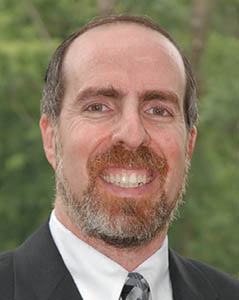
It is our ultimate and most fundamental challenge and goal—to motivate the next generation of Jews to wholeheartedly embrace our mesorah/tradition. Teaching and analyzing texts, imparting information, teaching skills and even modeling appropriate behavior are essential components of achieving this goal, but it is insufficient, especially in the contemporary environment.
Another piece of the educational/experiential model (at least for males) is creating opportunities for youngsters to take ownership of Jewish life by regularly leading the tefillah even during the adult service. In most Ashkenazic Batei Knesset, only a select few very talented post-bar mitzvah young men lead the tefillah or serve as ba’alei kria.
The nature of Sephardic tefillah allows for far greater youth participation. The entire tefillah is recited aloud word for word, and on Shabbat each section of pesukei d’zimra is recited by a different member or guest. At Congregation Shaarei Orah, the Sephardic Congregation of Teaneck, we make sure to allot certain portions of pesukei d’zimra to children. We also maximize the portions of pesukei d’zimra that is led by children in song.
Our kehillah was stirred to maximize youngster participation in the adult service on every Shabbat and chag, by a frightening story told by a guest speaker. The speaker recalled a family trip to Israel that included a visit to a great Sephardic synagogue in Jerusalem. He recounted how eager he was to revisit this beit knesset of his youth where throngs of Jews would assemble to hear the great chazanim of the time. Now, 20 years later, our speaker could not wait to see how great the kehillah became since he last visited.
The Shabbat when he scheduled to visit finally arrived. To his dismay and shock, the synagogue was nearly empty and barely scraped together a minyan of elderly men. How could this happen? The answer he discovered was simple but tragic. The kehillah had not invested in its youth! The synagogue paid dearly for the lack of cultivation of what Israelis call the “dor hemshech,” the next generation.
At Shaarei Orah, we even leverage the Sephardic practice (following the ruling of Maran in the Shulchan Aruch) of singing the Kriat Shema aloud with the ta’amei hamikra (traditional cantillations). The three sections of the Shema are divided among youngsters (even pre-bar mitzvah boys, in accordance with a ruling of Rav Meir Mazuz, a leading Sephardic halachic authority), each of whom sings a section. The rabbi comes and shakes the hand of the child after he completes his section, and the last youngster leaves the last pasuk of the third section for the chazan to recite aloud.
The youth highlight of the year, though, is Simchat Torah. Each boy is given an opportunity to run some portion of the tefillah. We “imported” this practice from Seattle’s Sephardic Bikur Holim Congregation and it has been a dramatic hit with children and parents alike.
The youngsters at Shaarei Orah are enormously grateful for these opportunities. Parents told me that they feel the synagogue is there for them, which is an entirely correct perception. Ensuring that the torch of Torah is passed on to the next generation tops the list of our priorities.
Reserving youth participation for youth minyanim may not be the best choice for ensuring our future. I suggest that every kehillah consider adopting portions of the Shaarei Orah strategy. At Shaarei Orah we even invite all of the very young children to lead the kehillah in concluding the tefillah with Adon Olam. With some flexibility and creativity, youth participation can be expanded with all of its concomitant short- and long-term benefits.
By Rabbi Haim Jachter
Rabbi Haim Jachter is the rabbi of Congregation Shaarei Orah. He also teaches at Torah Academy of Bergen County and serves as a dayan on the Beth Din of Elizabeth.










